Introducing DRICE: A modern prioritization framework
Introducing DRICE: A modern prioritization frameworkBoost your experiment win rate and help your team drive more impact👋 Hey, I’m Lenny and welcome to a 🔒 subscriber-only edition 🔒 of my weekly newsletter. Each week I tackle reader questions about building product, driving growth, and accelerating your career. If you boil down a product manager’s job to just one task, it’s making sure everyone on your team knows what to do next—and that it’s the most impactful work they can be doing. 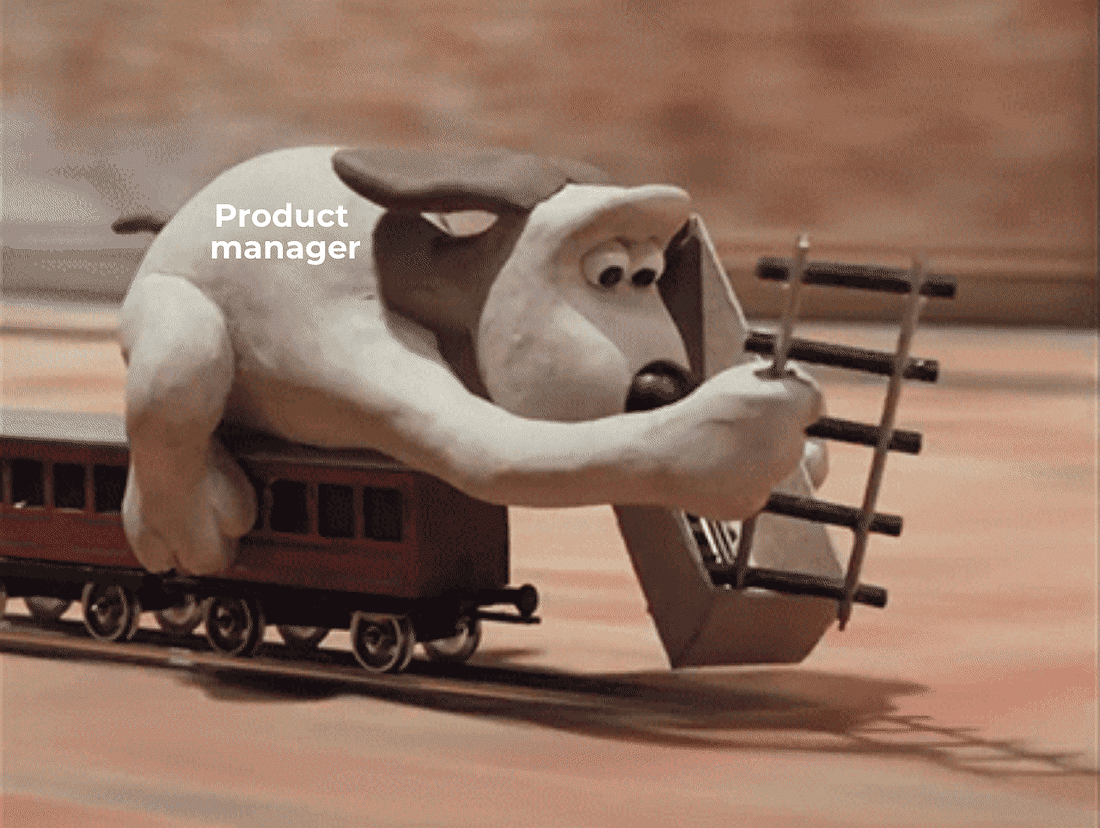 In other words, prioritizing. If you can get better at prioritizing, you can grow your leverage as a product leader, and increase the impact you and your team drive. And while you can’t double the speed that engineers build at or designers design at, by picking better projects even a little bit better, you can double your teams’ impact. Below, Darius Contractor and Alexey Komissarouk share a brand new framework that will make you significantly better at prioritizing. They also include plug-and-play templates, real-life case studies, and great memes. I wish I had this years ago. Darius Contractor is former head of growth at Dropbox, Facebook, Airtable, and Vendr and is currently Chief Growth Officer at Otter.ai. You can find him on X, LinkedIn, and Darius.com. Alexey Komissarouk, a former growth engineering lead at MasterClass and Opendoor, is currently writing a book and advising teams on growth engineering. You can find him on X, LinkedIn, and alexeymk.com. Alexey will be speaking about Growth Engineering at Reforge this Thursday. 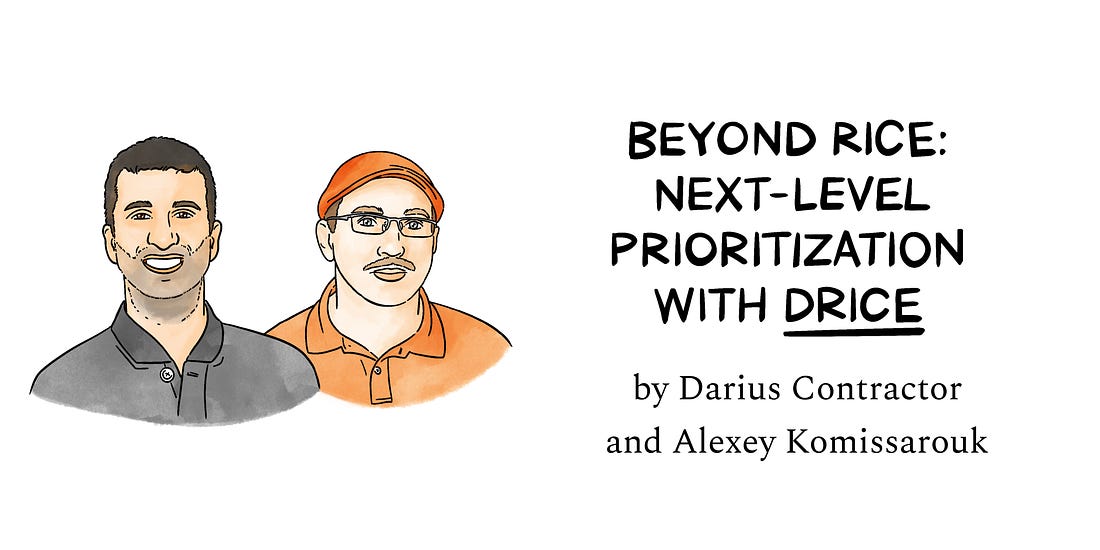 With limited time and resources, what is the highest-value thing a Product Manager can do for their team? Prioritization. Ruthless, rigorous prioritization. The guide below contains everything you need to run a reliable prioritization process. It’s based on a distillation of techniques from the authors’ combined 35-plus years of experience driving growth at Dropbox, Facebook, Airtable, Opendoor, and MasterClass that, in our experience, doubled our impact rate. The frameworks are primarily intended for growth teams, but the practices apply to any team focused on moving a business metric. This prioritization process should be run every planning cycle. Below, we’ll walk you through:
Throughout this guide, we’ll assume you’ve already collected tons of potential ideas—through brainstorming, sifting through data, looking at sales/CX calls, your past backlogs, etc. As a rule of thumb, you’ll want to have at least 5x as many ideas as you could reasonably build in the next time period (typically a quarter) before starting to prioritize. Part 1: RICEDefinitionIn short, RICE-ing is the process of T-shirt scoring (i.e. S/M/L) your ideas according to their:
The process is best illustrated by example. Example: “Checkout with PayPal” vs. “free-trial promo codes”Say your team is choosing between two potential ideas:
We can compare the ideas based on their qualities: Checkout with PayPal:
On the other hand, a free-trial promo code is:
In visual terms: 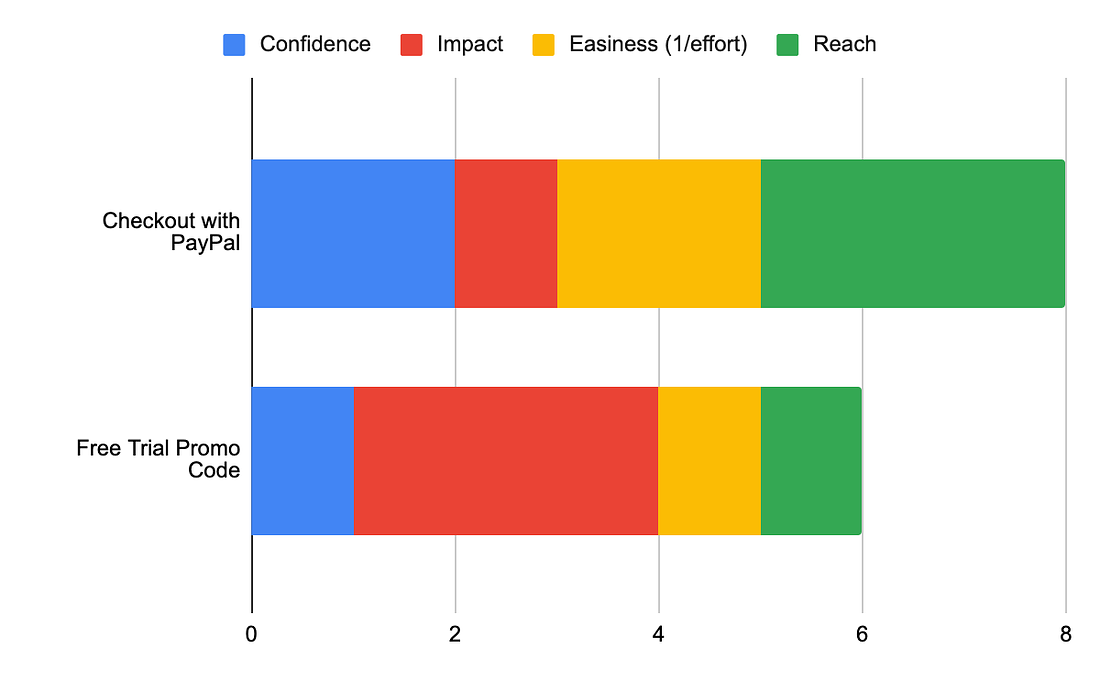 Eyeballing would suggest we’re better off with Checkout with PayPal. Even though the potential impact isn’t as high, the change is likelier to work, faster to implement, and will affect more potential customers. ProcessesThe process above works well with two ideas, but what if we have tens of ideas to score and rank? A spreadsheet keeps things organized. Here’s a minimalistic template from Alexey, and a batteries-included Airtable template (called EVELYN) from Darius.  Sizing heuristicsIt’s not always obvious exactly what “high impact” versus “medium impact” means. At this stage, these estimates are meant to be low-fidelity and directional SWAGs anyway. Rather than nailing the categories, compare between items—do all the M’s truly feel smaller than the L’s? That said, here are some heuristics for evaluating an idea at this stage. Reach is relatively straightforward to estimate: either your users will experience the change or they won’t. Effort estimates come with experience on the engineering side. Always strive to run the laziest test possible, asking “What is the least amount of engineering work required to test this idea?” Impact and Confidence have more subtlety, however. Impact An idea should be higher-impact if:
Confidence An idea should be higher-confidence if:
The product manager should have the context to fill in Impact, Confidence, and Reach. The Effort column can sometimes be filled by an experienced product manager, but more commonly a tech lead. Once a T-shirt-size prioritization is complete, you can sort the list based on the implied score (with T-shirt sizes translated to numeric values to make the math work): Score = (Reach % * Impact % * Confidence likelihood %) / Weeks of effort Sort all of the available ideas using their scores. Take about twice as many ideas as you’d have time for during the period you’re planning for (typically a quarter). This is your preliminary shortlist. Validating your shortlistSome shortlisted ideas will surprise you. RICE isn’t gospel; double-check and adjust the suspicious scores until you feel comfortable. Next, loop in your team, who will appreciate a chance to weigh in and offer helpful adjustments. Even after the refinements, some ideas you had thought of as clunkers will end up above your favorites. This is the process working as intended. By establishing objective evaluation criteria, you have separated the wheat from the chaff. Part 2: DRICEOnce your RICEd shortlist is ready, it’s time to invest in a higher-fidelity evaluation of your ideas. This assessment method is known as DRICE, a “Detailed RICE” estimate. During DRICE, we will go from:
“Wait, 30 minutes per idea?” says the growth PM reading this guide. “We don’t have time for this. Our list is solid. Let’s be biased toward action and get started!” Not so fast. 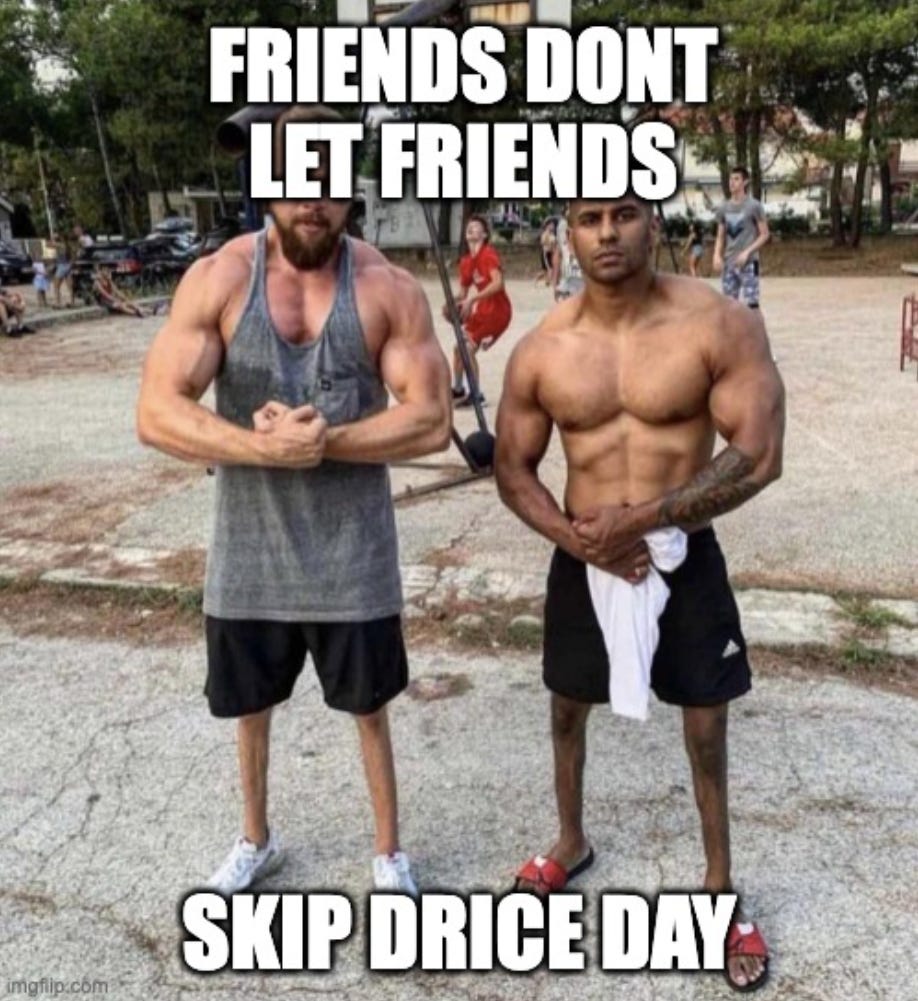 Teams that adopt DRICE notice a difference in the projects they end up prioritizing. Many “promising” projects turn out to be defeated by a half-hour investigation, while “nice to have” features that would have been left on the cutting-room floor end up becoming high-ROI winners. Dropbox case studyA particularly clear example of this comes from Darius’ time at Dropbox focused on activating new Dropbox Business users. One proposed idea was a migration tool for Basic users, streamlining the process of getting started with a Business account. Initially we didn’t think this would be a huge win, since target users were only a subset of all sign-ups. However, the DRICE investigation showed:
The DRICE investigation significantly bumped the idea’s expected ROI. We built it. The Dropbox Business Migration Tool became the biggest activation win of the quarter. Without DRICE, we were unlikely to have prioritized it at all. Overall, we found that Dropbox teams that adopted DRICE were able to move their key metric by twice as much as teams that stuck to a simpler prioritization process. 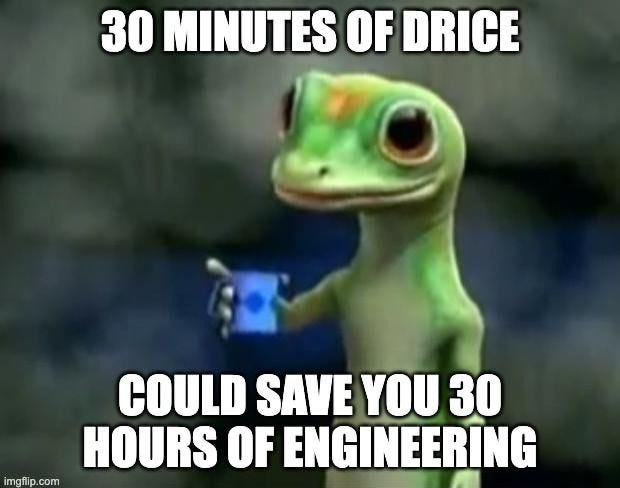 To see how the DRICE process works, it’s also best illustrated by example. Example DRICE: Adding PayPalWe’ve already RICEd the PayPal project:
Not bad. Here’s what a DRICE would look like: HypothesisA potential customer segment prefers to pay with PayPal instead of credit cards and has been emailing to let us know. By adding PayPal as an option in the checkout flow, we will improve conversion by 2.7%, or an incremental $540k/year. Impact estimate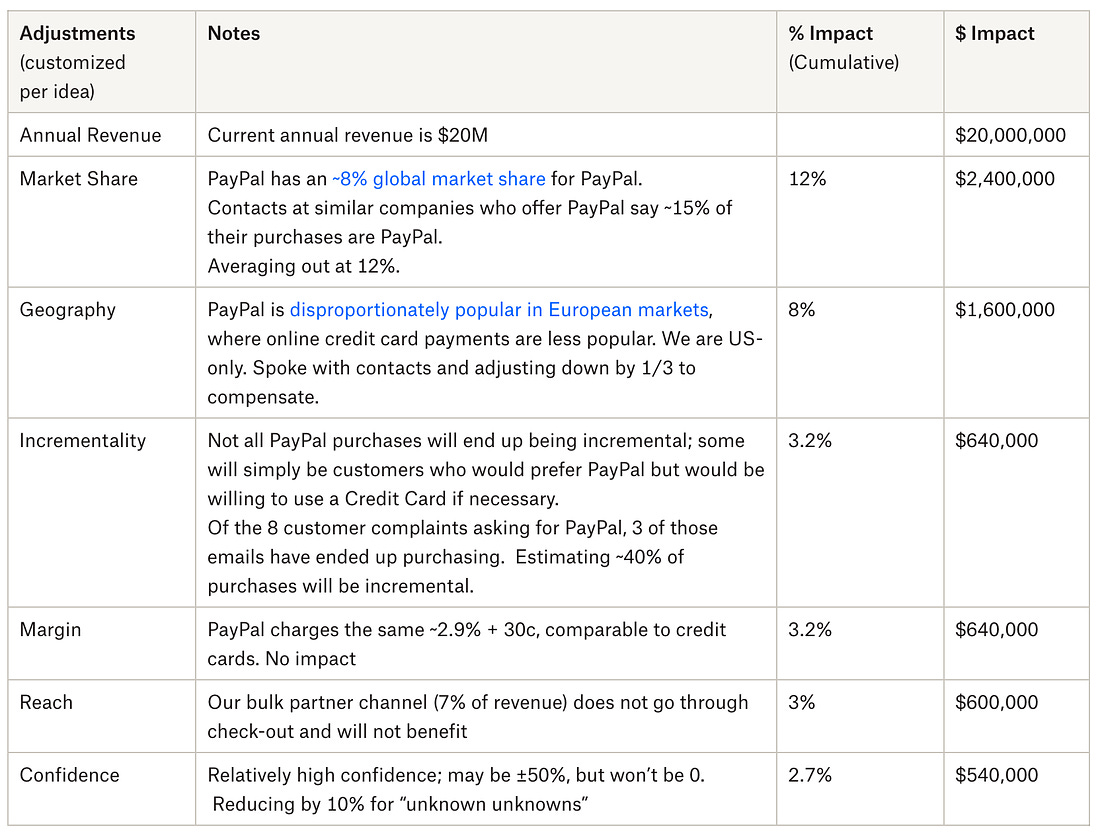 Engineering estimateEffort: 7 days We originally thought we’d have to integrate the Braintree API, but these days, you can integrate PayPal directly from Stripe. This eliminates the bulk of the expected back-end work, leaving us:
Return on eng investment
Through a DRICE estimate, we reduced the engineering estimate and increased the success likelihood for our “Checkout with PayPal” idea. With 30 minutes from PM and engineering, we’ve taken the idea from being marginal to a “let’s definitely do it this quarter” type of idea. Note that we didn’t eliminate guesswork as part of this process; our guesses simply became educated. Here’s a DRICE template to use when making your own estimates. Components of a DRICE estimateNow that we’ve walked through an example, let’s talk about what a DRICE involves and how to perform one. You’ll want: Hypothesis A clear, brief explanation of the idea that anybody without context will be able to understand, and a short justification for why you believe the idea will be effective. Impact estimate... Subscribe to Lenny's Newsletter to read the rest.Become a paying subscriber of Lenny's Newsletter to get access to this post and other subscriber-only content. A subscription gets you:
|
Older messages
Mastering product strategy and growing as a PM | Maggie Crowley (Toast, Drift, Tripadvisor)
Sunday, November 5, 2023
Listen now (83 mins) | Brought to you by Productroadmap.ai—AI to connect your roadmaps to revenue | Composer—the AI-powered trading platform | Eppo—Run reliable, impactful experiments — Maggie Crowley
Unpacking Amazon’s unique ways of working | Bill Carr (author of Working Backwards)
Thursday, November 2, 2023
Listen now (93 mins) | Brought to you by AssemblyAI—Production-ready AI models to transcribe and understand speech | Coda—Meet the evolution of docs | Wix Studio—The web creation platform built for
Lessons learned from a startup that didn’t make it
Tuesday, October 31, 2023
What not to do when building a B2B startup
Reflections on a movement | Eric Ries (creator of the Lean Startup methodology)
Sunday, October 29, 2023
Listen now (134 mins) | Brought to you by Sanity—The most customizable content layer to power your growth engine | Jira Product Discovery—Atlassian's new prioritization and roadmapping tool built
What AI means for your product strategy | Paul Adams (CPO of Intercom)
Thursday, October 26, 2023
Listen now (83 mins) | Brought to you by Eppo—Run reliable, impactful experiments | Hex—Helping teams ask and answer data questions by working together | HelpBar by Chameleon—The free in-app universal
You Might Also Like
🚀 Ready to scale? Apply now for the TinySeed SaaS Accelerator
Friday, February 14, 2025
What could $120K+ in funding do for your business?
📂 How to find a technical cofounder
Friday, February 14, 2025
If you're a marketer looking to become a founder, this newsletter is for you. Starting a startup alone is hard. Very hard. Even as someone who learned to code, I still believe that the
AI Impact Curves
Friday, February 14, 2025
Tomasz Tunguz Venture Capitalist If you were forwarded this newsletter, and you'd like to receive it in the future, subscribe here. AI Impact Curves What is the impact of AI across different
15 Silicon Valley Startups Raised $302 Million - Week of February 10, 2025
Friday, February 14, 2025
💕 AI's Power Couple 💰 How Stablecoins Could Drive the Dollar 🚚 USPS Halts China Inbound Packages for 12 Hours 💲 No One Knows How to Price AI Tools 💰 Blackrock & G42 on Financing AI
The Rewrite and Hybrid Favoritism 🤫
Friday, February 14, 2025
Dogs, Yay. Humans, Nay͏ ͏ ͏ ͏ ͏ ͏ ͏ ͏ ͏ ͏ ͏ ͏ ͏ ͏ ͏ ͏ ͏ ͏ ͏ ͏ ͏ ͏ ͏ ͏ ͏ ͏ ͏ ͏ ͏ ͏ ͏ ͏ ͏ ͏ ͏ ͏ ͏ ͏ ͏ ͏ ͏ ͏ ͏ ͏ ͏ ͏ ͏ ͏ ͏ ͏ ͏ ͏ ͏ ͏ ͏ ͏ ͏ ͏ ͏ ͏
🦄 AI product creation marketplace
Friday, February 14, 2025
Arcade is an AI-powered platform and marketplace that lets you design and create custom products, like jewelry.
Crazy week
Friday, February 14, 2025
Crazy week. ͏ ͏ ͏ ͏ ͏ ͏ ͏ ͏ ͏ ͏ ͏ ͏ ͏ ͏ ͏ ͏ ͏ ͏ ͏ ͏ ͏ ͏ ͏ ͏ ͏ ͏ ͏ ͏ ͏ ͏ ͏ ͏ ͏ ͏ ͏ ͏ ͏ ͏ ͏ ͏ ͏ ͏ ͏ ͏ ͏ ͏ ͏ ͏ ͏ ͏ ͏ ͏ ͏ ͏ ͏ ͏ ͏ ͏ ͏ ͏ ͏ ͏ ͏ ͏ ͏ ͏ ͏ ͏ ͏ ͏ ͏ ͏ ͏ ͏ ͏ ͏ ͏ ͏ ͏ ͏ ͏ ͏ ͏ ͏ ͏ ͏ ͏ ͏ ͏ ͏ ͏ ͏ ͏ ͏ ͏
join me: 6 trends shaping the AI landscape in 2025
Friday, February 14, 2025
this is tomorrow Hi there, Isabelle here, Senior Editor & Analyst at CB Insights. Tomorrow, I'll be breaking down the biggest shifts in AI – from the M&A surge to the deals fueling the
Six Startups to Watch
Friday, February 14, 2025
AI wrappers, DNA sequencing, fintech super-apps, and more. ͏ ͏ ͏ ͏ ͏ ͏ ͏ ͏ ͏ ͏ ͏ ͏ ͏ ͏ ͏ ͏ ͏ ͏ ͏ ͏ ͏ ͏ ͏ ͏ ͏ ͏ ͏ ͏ ͏ ͏ ͏ ͏ ͏ ͏ ͏ ͏ ͏ ͏ ͏ ͏ ͏ ͏ ͏ ͏ ͏ ͏ ͏ ͏ ͏ ͏ ͏ ͏ ͏ ͏ ͏ ͏ ͏ ͏ ͏ ͏ ͏ ͏ ͏ ͏ ͏ ͏ ͏ ͏ ͏ ͏ ͏
How Will AI-Native Games Work? Well, Now We Know.
Friday, February 14, 2025
A Deep Dive Into Simcluster ͏ ͏ ͏ ͏ ͏ ͏ ͏ ͏ ͏ ͏ ͏ ͏ ͏ ͏ ͏ ͏ ͏ ͏ ͏ ͏ ͏ ͏ ͏ ͏ ͏ ͏ ͏ ͏ ͏ ͏ ͏ ͏ ͏ ͏ ͏ ͏ ͏ ͏ ͏ ͏ ͏ ͏ ͏ ͏ ͏ ͏ ͏ ͏ ͏ ͏ ͏ ͏ ͏ ͏ ͏ ͏ ͏ ͏ ͏ ͏ ͏ ͏ ͏ ͏ ͏ ͏ ͏ ͏ ͏ ͏ ͏ ͏ ͏ ͏ ͏ ͏ ͏ ͏ ͏ ͏ ͏ ͏ ͏ ͏ ͏ ͏ ͏
